#Exploratorium
Text

San Francisco Exploratorium, 1970s
Mickey Crisp
103 notes
·
View notes
Text

#human#ai#daisy#the exploratorium#exploratorium#chatbot#computers#artificial intelligence#she also mentioned hal 9000 :o
38 notes
·
View notes
Text
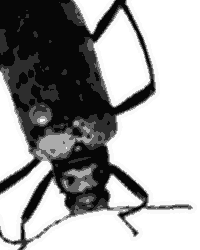
2 notes
·
View notes
Text



Bathroom tiles
7 notes
·
View notes
Text
Life Sucks But I Love It...
Message Board at the Exploratorium San Francisco

5 notes
·
View notes
Text
2022 Reading Log pt. 15
Posted right before I get on a plane for the first time in 10+ years

70a. The Secret Life of Puppets by Victoria Nelson. Put down within 20 pages. The concept is decidedly interesting. The book’s thesis is that in modern Western society, the supernatural is more likely to be demonized than valorized, and that much supernatural feeling has been sublimated into the arts. This can be seen in attitudes towards anthropomorphic figures, including puppets, statues and robots. Unfortunately, the book’s writing style is incredibly pretentious and off-putting. The author is also a big believer in both Freud (beyond the references to the uncanny that the topic would naturally include) and Plato, both of whom are philosophers I hate. When I got to the end of the introduction, which warns that nobody who reads the book will be the same when they finish it, I rolled my eyes as hard as I could and stopped reading.
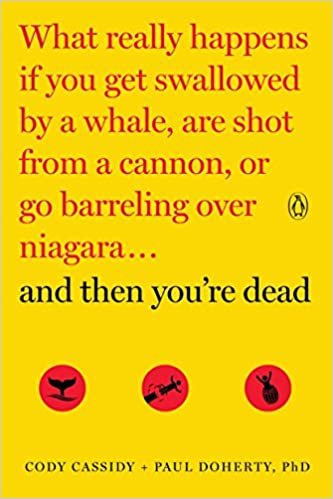
71. …and then you’re dead by Cody Cassidy and Paul Doherty, PhD. This book is much less pretentious, and a lot of fun. I liked it now, but I would have absolutely loved it when I was in high school, which is pretty much the target audience. The subject of the book is what exactly would happen to the body in a variety of hypothetical scenarios, and the biology, chemistry and physics behind, say, skydiving from the ISS, falling into a volcano or never falling asleep. Doherty is the senior staff scientist at the Exploratorium in San Francisco, which seems like the perfect training for writing a morbid educational book about various improbable ways to die. If you like popular science books like What If? and/or books about death like Will My Cat Eat My Eyeballs?, this is basically the perfect Venn diagram overlap of those.

72. Fighting Fantasy Monsters: Out of the Pit by Steve Jackson and Ian Livingstone, edited by Marc Gascoigne. Fighting Fantasy is a bit of retro gaming I had never had first hand experience with before. It started out as a series of Choose-Your-Own-Adventure style solo gamebooks, and then developed into a fairly simple RPG ruleset. The edition I read was the 2011 reprint for Advanced Fighting Fantasy, specifically, so there’s a little tiny bit more rules material than in the original. The monsters within are a mix of Tolkien and D&D knockoffs with more original content. A lot of them show their origins as CYOA critters—there’s a lot of unfair deathtrap, you must do exactly one type of action or you’ll die sort of mechanics on display here. There’s also some vintage racism—“headhunters” and “pygmies” are monsters here, and a lot of the writing for evil humanoid races like orcs and trolls have racialized tones. The reason I picked this up in the first place, and likely its greatest point of recommendation, is the art. Every monster gets a picture, all in black and white lineart and filled with grotesque detail. If you like 1st edition AD&D art, you’ll like the art in this book. The PDF conversion is a little sloppy; I think a text scanning program was used and not triple-checked, as “orcs” are referred to as “ores” about half of the time.
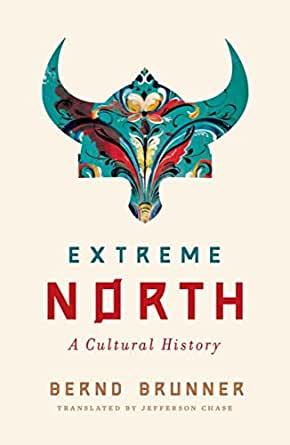
73. Extreme North: A Cultural History by Bernd Brunner, translated by Jefferson Chase. This was originally written in German. It talks about how the concept of the “North” has been an influence on mainstream Western thought—primarily Western Europe and the United States. The North in this case is primarily Scandinavia, Iceland and Greenland, but also discussions of Canada, Siberia and Alaska come into play. The core of the book is the development of a romanticized idea of the North as a bastion of civilization, an untamed wilderness, or a social paradise, and how that shaped everything from the Age of Exploration to Nazi Germany. There are a lot of fingers in the pie of how “Aryan” and “Nordic” became figures of racial supremacy—some of the historical figures I knew, like Wagner and Haeckel, and others I was surprised by their roles, like Kant and the Brothers Grimm. I also didn’t know that looking at Swedish social democracy with a wistful sigh is nothing new for American leftists—the earliest the book talks about is in the mid 1930s!

74. Beasties and Beasties 2 by Thomas Denmark. Yeah, I’m on something of a monster book kick. I’m lumping these two together because they have the same author, same publisher, and are very short. Each is around 90 pages, and only half of those have text. These are small zine-sized books of monsters and NPCs, with an illustration and a stat block for OD&D (or its legally distinct equivalent) on facing pages. Each has a few pages of backmatter with maps and world building—Beasties has an entry about the floating ziggurats of the Locust Gods, and Beasties 2 has an ecology article about goblin society and history. The monsters are all illustrated, but are illustrated with stock art, which limits their scope somewhat. Lots of humanoids, lots of undead. And lots of sexy ladies; the stock art chosen is often very thirsty for black and white line illustrations. Thinking back on it, none of the monsters really leap to mind, except for a somewhat awkward Trump parody (a babbling elephant-monster called a Drumpf) in Beasties 2, and the fact that a lot of the monsters in Beasties 1 have stench based abilities. These aren’t the worst OSR monster books I’ve read (if we count Lusus Naturae, that’s going to be a hard milestone to beat). But they’re not the best either.

75. Chasing Ghosts by Marc Hartzman. This is a weird one. It claims to be a book about ghosts for both skeptics and believers, but what that actually means in practice is that it’s a book by someone who clearly believes in ghosts that’s full of stories about hoaxes and frauds, followed by special pleading that some of the phenomena are real, or that the hoaxer was only hoaxing when they got caught for attention but the original haunting was absolutely real, you can trust me. The book is also intentionally incomplete about a number of the cases within it, like the Mumler Spirit Photographs, in order to make it seem like there’s more mystery than there actually is. The author basically confesses on the last page that he believes in ghosts because he’s afraid of death (the quote is “We become something new in the afterlife. Whatever form it takes, it sounds a lot like heaven. Dead in a box is hell.”). Basically the only thing I can wholeheartedly recommend about the book is the imagery. There are archival photos and newspaper clippings, supplemented with moody greyscale illustrations by Lauren O’Neill.
#reading log#ghosts#paranormal#monster book#osr#fighting fantasy#scandinavia#cultural history#white supremacy#puppets#uncanny valley#exploratorium
4 notes
·
View notes
Text
[2962] van life

0 notes
Video
Spooky by Thomas Hawk
#Exploratorium#San Francisco#skull#skeleton#Marina District#California#city#United States of America#USA#United States#flickr
0 notes
Text
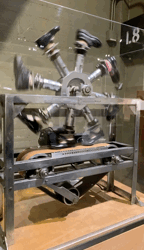

“This device was invented at the National Bureau of Standards in 1933 and used until about 1945 to test the endurance of leather shoes.”
0 notes
Text
San Francisco, USA
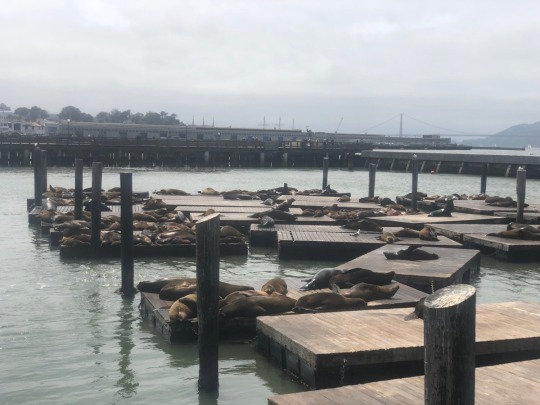
View On WordPress
#adventure#Alcatraz Island#architecture#beautifuldestinations#Big Bus Tour#bridge#coupleadventure#coupletrip#destination#Disney#Exploratorium#globetrotting#GoCity Pass#Golden Gate Bridge#happytraveller#journey#museum#nature#Pier 39#San Francisco#science#sealions#sightseeing#touringadventure#Travel#travelblogger#travelbug#travelcouple#traveltheworld#traveltheworldtogether
1 note
·
View note
Text
Exploring San Francisco - Off the beaten path
Exploring #SanFrancisco off the beaten path - beyond #Lombard #GoldenGate & #Presidio
I write my blog like my diary and primarily for myself – so one day when I am old and perhaps not able to do much, I can at least see read about the exciting life I lived. Often then I write and forget to post the blog. I have many such blogs that I come across from time to time in my laptop. So this is one such older blog. It seems I forgot to post it and a few things may have changed or some…

View On WordPress
#Alcatraz#Angel island#artist Peter Richards#Baia Restaurant#Black Sands Beach at Marin#Cafe Trieste in Little Italy#Chinatown#Exploratorium#Feral Parrots of Telegraph Hill “The Wild Parrots of Telegraph Hill”#Fisherman&039;s Wharf#Francisco#Ghirardelli Square#Golden Gate Bridge#Golden Gate park#Gracias Madre#Greens Restaurant#Japanese tea garden#Lands’ End#Lombard street#Lucky Vegetarian Restaurant#Presidio#Steps#The San Francisco Botanical Garden at Strybing Arboretum#The Tenderloin#The Wave Organ#XOX Truffles in Little Italy
0 notes
Text
Use Chat GPT to Enhance Learning Experiences and Revolutionize Your Classroom
Revolutionize adult vocational education with the power of Chat GPT! Explore 9 innovative ways to enhance learning and unlock new possibilities for your students.
Why not use Chat GPT to enhance learning?
Artificial Intelligence (AI) has been revolutionising various industries, and higher education is no exception. I’ve written about it before, but one of the most exciting developments in AI is Chat GPT, a large language model that can generate human-like responses to prompts provided by users.
Chat GPT is quickly becoming a valuable tool for students…

View On WordPress
#AI#Chat GPT#Co-Designer#Collaboration Coach#Collaborative Skills#Critical Thinking#Dynamic Assessor#Exploratorium#Graeme Smith#Guide on the Side#Learning Enhancement#Personal Tutor#Possibility Engine#problem-solving#Study Buddy#thisisgraeme#vocational education
0 notes
Text
Prototyping with Class IV at @BrearleyNYC using @TinkeringStudio’s Open Kit for tinkering with balance. #STEAM #MakerEd

View On WordPress
#balance#balancing#Brearley#class iv#exploratorium#fulcrum#idea kitchen#Karen Blumberg#KarenBlumberg#makered#Makerspace#STEAM#the idea kitchen#Thingiverse#TinkerCad#Tinkering Studio#tinkeringstudio
1 note
·
View note
Text




Water drop photography at the Exploratorium
2 notes
·
View notes
Text

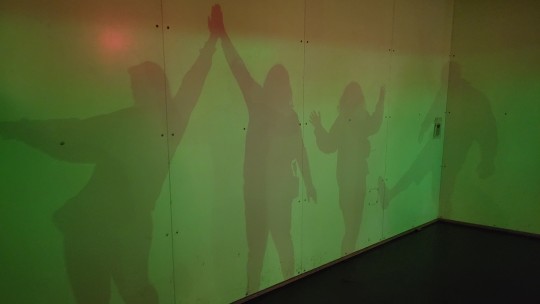




Does it cohere? It coheres 👍
#friends? friends? friends?!?!? i have friends ?!?!?#selfie#the exploratorium#yall know about the exploratorium?? they have adult nights on thursdays
20 notes
·
View notes
Text
Exploratorium

4 notes
·
View notes